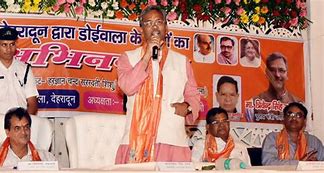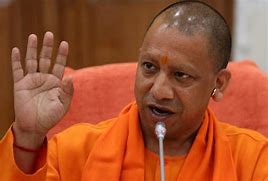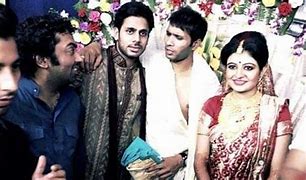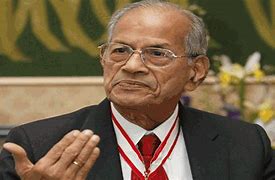Feature
Role reversal for Congress-BJP as parliament faceoff continues

New Delhi: The ongoing battle in parliament appeared to be witnessing a role reversal of sorts between the ruling Bharatiya Janata Party (BJP) and the Congress with both the parties blaming each other for the stalemate on Friday.
Similar to the logjam witnessed during the Congress-led United Progressive Alliance (UPA) government’s days when many parliamentary sessions were washed out, no major business could be transacted in the first four days of the monsoon session.
Not just the opposition, the government also appeared equally aggressive, countering din with din, and slogans with slogans.
On Friday, the Modi government, staring at a completely washed out monsoon session, blamed the Congress for being an irresponsible opposition.
The Congress was quick to remind the BJP how it disrupted parliament for weeks in the 15th Lok Sabha.
Congress leader Anand Sharma accused the BJP and especially Finance Minister Arun Jaitley and External Affairs Minister Sushma Swaraj of “suffering a collective loss of memory”.
Sharma told IANS that the BJP should remember how it had disrupted parliament over various demands during its 10 years in opposition.
“They spoilt many sessions of parliament when they were in opposition. The accusations against us are baseless,” Sharma said.
Minister of State for Parliamentary Affairs Mukhtar Abbas Naqvi, however, denied this.
“There is no similarity to when we protested and the way they are protesting. We had clear demands. We wanted JPC (referring to the 2010 winter session when BJP pressed for a JPC on the 2G scam), we wanted discussions. One wonders what they (Congress) want,” Naqvi told IANS.
Renuka Chowdhary, Congress MP from the Rajya Sabha, said: “There is no similarity… we don’t want to disrupt parliament. We have given the government a choice. Our demand for resignation to ensure fair probe is natural justice.”
Communist Party of India leader D. Raja, however, said: “One cannot help but draw a parallel… but the issues and situation are different. Government is here giving tit for tat instead of listening to the opposition. They are also creating a ruckus, parliament can’t function this way”.
As compared to the last few parliament sessions of the UPA, the National Democratic Alliance government had seen better productivity in its first year in office as far as legislative business was concerned, according to statistics.
“The BJP was an irresponsible opposition. If in the last one year of the NDA government, any bill was passed, then the credit goes to the Congress,” Anand Sharma said.
Reiterating the demand for the resignations of External Affairs Minister Sushma Swaraj and the chief ministers of Rajasthan and Madhya Pradesh, CPI-M General Secretary Sitaram Yechury said the yardstick was set by the BJP when it was in opposition.
“When there are charges of corruption, why shouldn’t the minister demit office? These people should demit office or they are to be removed from office. That was the yardstick when BJP was sitting there as the opposition,” he said.
“Leader of the House (Arun Jaitley) today was the Leader of the Opposition (earlier)and the Leader of the Opposition (Ghulam Nabi Azad) today was the minister in the then government,” he said.
During the UPA rule, disruptions over issues like the allocation of 2G spectrum, coal blocks, FDI in retail, demand for Telangana, and the Commonwealth Games had marred the 15th Lok Sabha, making it the least productive session in 50 years.
The two houses on average worked for only 61 percent of the allotted time.
The newly elected NDA government has had a good track record of running parliament so far, with the budget session this year being the most productive in recent years, according to PRS Legislative Research.
During the budget session, Lok Sabha’s working hours compared to scheduled hours took the productivity to 123 percent, while Rajya Sabha had 101 percent productivity.
Entertainment
Meghalaya Reserves Legalized Gambling and Sports Betting for Tourists

The State Scores Extra High on Gaming-Friendly Industry Index
Meghalaya scored 92.85 out of 100 possible points in a Gaming Industry Index and proved to be India’s most gaming-friendly state following its recent profound legislation changes over the field allowing land-based and online gaming, including games of chance, under a licensing regime.
The index by the UK India Business Council (UKIBC) uses a scale of 0 to 100 to measure the level of legalisation on gambling and betting achieved by a state based on the scores over a set of seven different games – lottery, horse racing, betting on sports, poker, rummy, casino and fantasy sports
Starting from February last year, Meghalaya became the third state in India’s northeast to legalise gambling and betting after Sikkim and Nagaland. After consultations with the UKIBC, the state proceeded with the adoption of the Meghalaya Regulation of Gaming Act, 2021 and the nullification of the Meghalaya Prevention of Gambling Act, 1970. Subsequently in December, the Meghalaya Regulation of Gaming Rules, 2021 were notified and came into force.
All for the Tourists
The move to legalise and license various forms of offline and online betting and gambling in Meghalaya is aimed at boosting tourism and creating jobs, and altogether raising taxation revenues for the northeastern state. At the same time, the opportunities to bet and gamble legally will be reserved only for tourists and visitors.
“We came out with a Gaming Act and subsequently framed the Regulation of Gaming Rules, 2021. The government will accordingly issue licenses to operate games of skill and chance, both online and offline,” said James P. K. Sangma, Meghalaya State Law and Taxation Minister speaking in the capital city of Shillong. “But the legalized gambling and gaming will only be for tourists and not residents of Meghalaya,” he continued.
To be allowed to play, tourists and people visiting the state for work or business purposes will have to prove their non-resident status by presenting appropriate documents, in a process similar to a bank KYC (Know Your Customer) procedure.
Meghalaya Reaches Out to a Vast Market
With 140 millions of people in India estimated to bet regularly on sports, and a total of 370 million desi bettors around prominent sporting events, as per data from one of the latest reports by Esse N Videri, Meghalaya is set to reach out and take a piece of a vast market.
Estimates on the financial value of India’s sports betting market, combined across all types of offline channels and online sports and cricket predictions and betting platforms, speak about amounts between $130 and $150 billion (roughly between ₹9.7 and ₹11.5 lakh crore).
Andhra Pradesh, Telangana and Delhi are shown to deliver the highest number of bettors and Meghalaya can count on substantial tourists flow from their betting circles. The sports betting communities of Karnataka, Maharashtra, Uttar Pradesh and Haryana are also not to be underestimated.
Among the sports, cricket is most popular, registering 68 percent of the total bet count analyzed by Esse N Videri. Football takes second position with 11 percent of the bets, followed by betting on FIFA at 7 percent and on eCricket at 5 percent. The last position in the Top 5 of popular sports for betting in India is taken by tennis with 3 percent of the bet count.
Local Citizens will Still have Their Teer Betting
Meghalaya residents will still be permitted to participate in teer betting over arrow-shooting results. Teer is a traditional method of gambling, somewhat similar to a lottery draw, and held under the rules of the Meghalaya Regulation of the Game of Arrow Shooting and the Sale of Teer Tickets Act, 2018.
Teer includes bettors wagering on the number of arrows that reach the target which is placed about 50 meters away from a team of 20 archers positioned in a semicircle.
The archers shoot volleys of arrows at the target for ten minutes, and players place their bets choosing a number between 0 and 99 trying to guess the last two digits of the number of arrows that successfully pierce the target.
If, for example, the number of hits is 256, anyone who has bet on 56 wins an amount eight times bigger than their wager.























